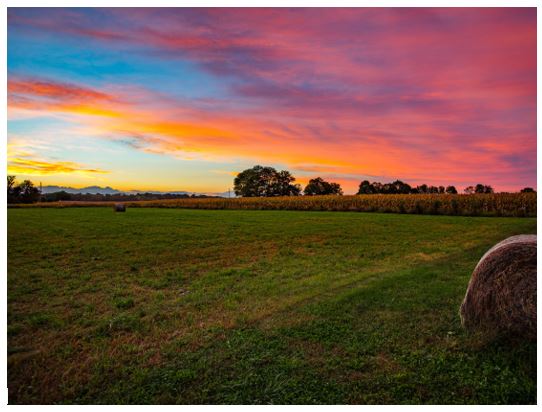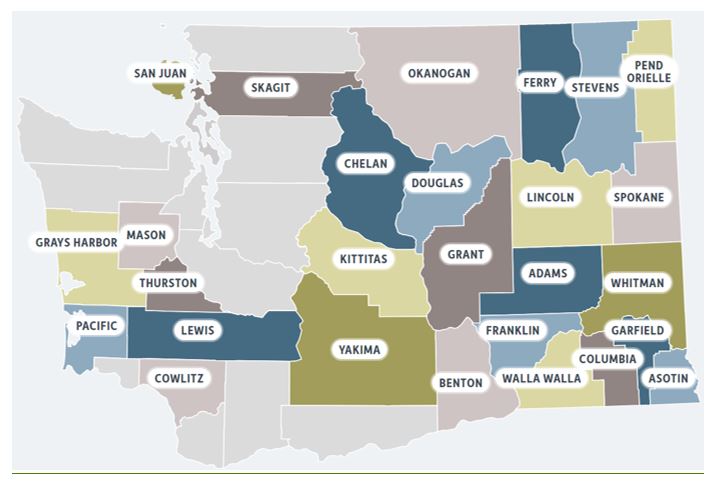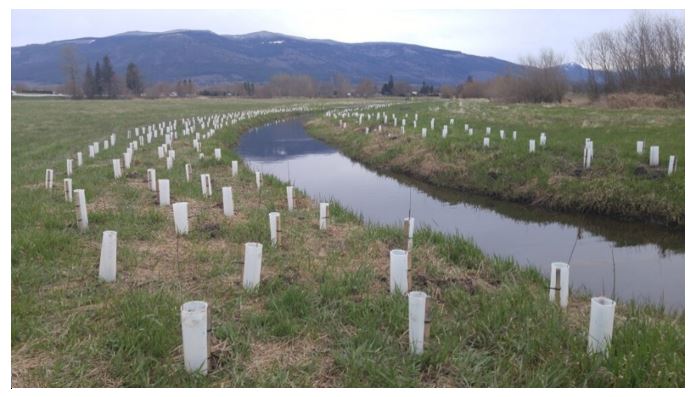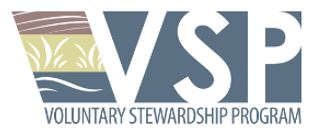|
|
| |
Skagit
County Voluntary Stewardship Program
|
|
| |

|
|
| |
The Voluntary Stewardship Program (VSP) provides funding and technical assistance incentives to agricultural landowners who implement best management practices and natural resource enhancement on their property. VSP is the alternative, non-regulatory approach to protecting Critical Areas in Skagit County while maintaining agricultural productivity. Instead of enacting further Critical Areas regulation for agricultural activities, the VSP allows landowners to develop management plans with the support of local experts and avoid a “one size fits all” approach.
|
|
| |
Potential projects could include:
|
|
| |
 |
Planting native trees and shrubs adjacent to waterways |
 |
Installing fencing to exclude livestock from waterways |
 |
Installing in-stream structures to provide habitat and reinforce stream banks |
|
|
| |
These types of projects are generally implemented by partner organizations like Skagit Conservation District, Skagit Fisheries Enhancement, and more, and are all considered “voluntary stewardship.” Skagit County’s VSP coordinator acts as the point-person between landowner and technical support at these organizations to pair each landowner with a program tailored to their needs.
Additionally, one of the programs VSP supports is the Skagit Conservation District’s Cover Crop program, which provides grants to farmers interested in planting cover crops on their fields each fall. Cover crops are a great way to recycle nitrogen, improve soil organic matter and carbon sequestration, reduce erosion, improve water quality, and maintain living roots and the soil biotic community. If you are interested in learning more, visit the Skagit Conservation District website.
|
|
| |
|
|
| |
Agricultural Producer Survey
Skagit County’s Voluntary Stewardship Program tracks and supports what producers like you are doing to protect our land. Your voluntary stewardship means less regulations for you and other farmers. The work you do on your property to improve soil health and protect water quality makes a big difference, even if you’re not part of a formal program.
The success of VSP relies on the participation from our Skagit agricultural community! You can take our agricultural producer survey to tell us about how you protect land, soil, and water.
To request a paper copy of the survey, please contact Jenn E. Johnson at jennej@co.skagit.wa.us or 360-416-1457.

VSP Frequently Asked Questions
|
|
| |
|
|
| |
|
|
| |
History of the Voluntary Stewardship Program |
|
| |
On December 19, 2011, Skagit County enrolled in the State's VSP for protection of critical areas in areas of agricultural activity. Statewide, 27 counties are now enrolled.
|
|
| |
 |
|
| |
VSP legislation, codified at RCW 36.70A.700-760, enables an enrolled county to protect and restore riparian streams and other critical areas on agricultural land through new voluntary programs and coordination of existing programs, instead of new regulation. It provides focus and direction for agricultural stewardship, measurable goals and benchmarks, and relies on local watershed groups to develop work plans for implementation.
To date, Skagit County has completed the first five-year as well as two-year reports meeting the Conservation Commission’s eligibility criteria. More information on the development of the VSP in Skagit County can be found on the Watershed Group page.
|
|
| |
Documents |
|
| |
While VSP is a statewide program, each county has its own work plan which serves at the primary guidance for all VSP-related work in the county.
|
|
| |
To date, Skagit County has completed the first five-year report as well as the subsequent two-year reports, meeting the Conservation Commission’s eligibility criteria.
|
|
| |
Background Documents
|
|
| |
|
|
| |
For More Information |
|
| |
|
|
| |
VSP Work Group
|
|
| |

|
|
| |
Work Group information and meeting details |
|
| |
The VSP Work Group is made up of local producers, partner organizations, and County staff. The group is tasked with advising the VSP Coordinator on how best to implement the Voluntary Stewardship Program in Skagit County. This group meets at least quarterly to make recommendations and offer advice on how best to implement the Skagit County VSP Work Plan.
Meetings are open to the public and all interested Skagitonians are encouraged to attend.
The VSP Work Group has two upcoming openings!
VSP Work Group members provide input and make decisions to achieve the program’s goals. Members are appointed by Skagit County Commissioners and serve without compensation in 3-year terms. Applications are open until December 31st, 2025. Questions? Please contact jennej@co.skagit.wa.us or 360-416-1457.
Learn more about becoming a VSP Work Group Member
The Board of County Commissioners adopted resolutions that declare that the County has sufficient funding to: begin coordinating the Voluntary Stewardship Program, establish the VSP Work Group (formerly known as the Watershed Group) and appoint the VSP Work Group.
|
|
| |
|
|
| |
Current WVSP Work Group meeting information
|
|
| |
AGENDAS & MINUTES |
|
| |
2025 (Meeting time 8:00-10:00 a.m.)
January 27 | Agenda | Minutes
March 10 | Agenda | Minutes
April 2 | Agenda | Minutes
May 12 | Agenda | Minutes
July 14 | Agenda
September 8 | Agenda | Minutes
November 10 | Agenda
2024
January 23 | Agenda | Minutes
March 18 | Agenda | Minutes
May 20 | Agenda | Minutes
July 15 | Agenda | Minutes
September 16 | Agenda | Minutes
November 18 | Agenda | Minutes
2023
March 17 | Agenda | Minutes
June 6 | Agenda
September 20 | Agenda | Minutes
September 28 | Agenda | Minutes * Special Meeting
November 13 | Agenda | Minutes
2022
March 25 | Agenda | Minutes
June 2 | Agenda
September 23 | Agenda | Minutes
December 2 | Agenda | Minutes
2021
January 15, | Agenda
May 13 | Agenda
September 30 | Agenda
December 6 | Agenda | Minutes
2020
June 26 | Agenda | Minutes
September 25 | Agenda | Minutes
November 20 | Agenda | Minutes
| |
|
Washington State VSP |

Learn more about Washington’s
VSP program
|
Producer Survey |
|
Farmers can now take our agricultural producer survey to share their stewardship!

|
News |
|
Apply to join VSP Work Group!
VSP Work Group members provide input and make decisions to achieve the program’s goals. Members are appointed by Skagit County Commissioners and serve without compensation in 3-year terms. Learn more about the VSP Work Group here. Applications are open until December 31st, 2025.

Watershed Group Annual Meeting Schedule
Meetings are held at 8:00-10:00am
- January 27th, 2025
- March 10, 2025
- May 12, 2025
- July 14, 2025
- September 8, 2025
- November 10, 2025
Join in person at 1800 Continental Place, Mount Vernon, WA 98273
or online via Teams
Reach out to Taylor Scott for more details taylors@co.skagit.wa.us |
|
The new 2024 Skagit County Monitoring Program Annual Report and StoryMap are available! See current water quality conditions throughout the County.

|
Contact |
Taylor Scott
Voluntary Stewardship Program Coordinator
taylors@co.skagit.wa.us
360-630-9355
Natural Resource Division Contacts
Physical and Mailing Address:
1800 Continental Place
Mount Vernon, WA 98273
|
|
|
|